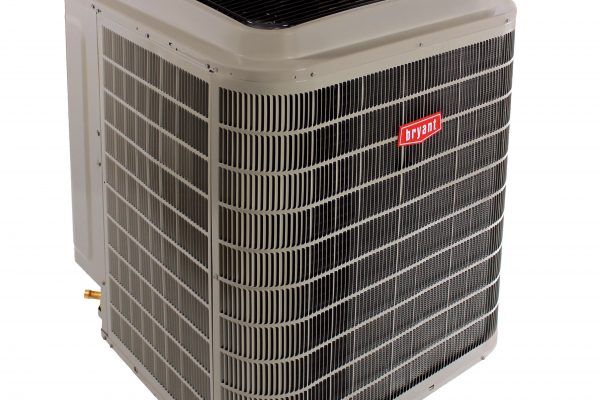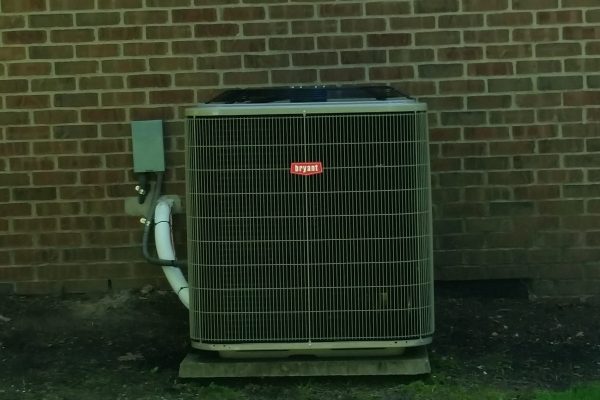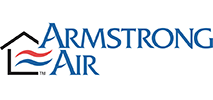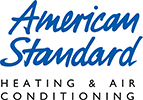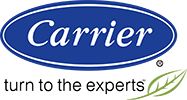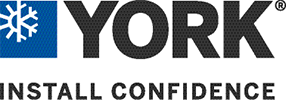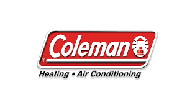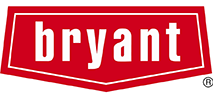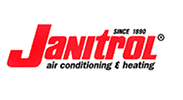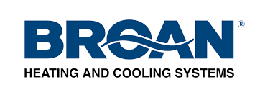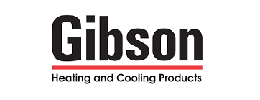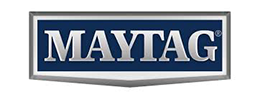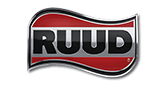In the Miami Valley, air source heat pumps can be a viable option for your heating and cooling needs. They use electricity and are much more efficient than resistance heating units like furnaces and baseboard heaters. High efficiency air source heat pumps can also dehumidify better than standard air conditioners, resulting in less energy use and more thermal comfort during the summer months.
How does an air source heat pump work?
Like an air conditioner, air source heat pumps have the ability to transfer heat between the building and outside air. Air source heat pumps also have the ability to heat your building as well. Each Heat pump has refrigerant system, which is a compressor and two copper tube coils, one outside and one inside, and the outside coil, which is encased in aluminum fins. The refrigerant system extracts heat from the refrigerant as it condenses back to liquid for both heating and cooling with a reversing valve. The blower than moves that air though the building ductwork. When the thermostat is satisfied, the unit shuts off.
WHAT IS THE BEST TYPE OF HEAT PUMP FOR YOU?
When heat pumps were first developed, they used a single speed compressor that only operated at full capacity, thus using more energy and causing it to wear out faster. Two-speed compressors allow operation at a lower level, which reduces wear and tear and can allow the heat pump to keep different rooms at different temperatures, provided a zone control system is installed.
-
Single Stage
- A single stage air source heat pump turns on when indoor temperatures exceed or are below the temperature setting on your thermostat. Once the temperature set on the thermostat is reached it turns off again. Single stage heat pumps always operate at 100% capacity.
-
Two Stage
- More efficient than single stage units, two stage heat pumps vary their output between two levels: high and low. Ideally, the low stage would satisfy the thermostat most of the time. When necessary, the high stage would turn on. This helps eliminate temperature swings and helps to dehumidify the air, making you feel more comfortable for longer periods of time.
-
Variable Speed
- Variable speed air conditioners precisely control the airflow throughout your home in order to maintain the highest level of comfort. This allows the air conditioner to run continuously, while consuming far less electricity than a single stage air conditioner. The constant airflow has some key benefits: maximum air filtration, dehumidification, minimum cold spots and quieter operation.
Blower Speed
The type of fan motor can also impact energy savings and air comfort. A dual-speed or variable-speed motor reduces noise from the blower always running at full speed, and it also keeps air moving comfortably.
Geothermal Heat Pumps
Looking for even bigger savings down the road? Geothermal heat pumps use the environment around them to transfer heat between the ground (or a nearby water source) and your house. Since ground and water temperatures remain more constant than air temperatures, the cost to operate these is much lower and can reduce energy use by as much as 50%.
Which heat pump is the right one for your home? Contact our experts today!
Heat pumps can be quiet, with models available up to 58 DB. Two stage and Variable speed units with a humidifier help to humidify the air more efficiently during heating cycles and also dehumidify air more efficiently as well during cooling cycles. Used with an back up furnace, heat pumps can ensure your year round comfort and energy efficiency.
Thermostat
Heat pumps, like traditional central air conditioning and furnaces, can be controlled with a thermostat. Having a thermostat that can auto change between heating and cooling is essential. New technology like Bryant Evolution Connex and Bryant Housewise allow Wi-Fi connections that allow you to manage your home’s temperature settings from anywhere, keeping you cool in the summer and warm in the winter. Some thermostats qualify for utility rebates , check with your utility provider.
Back-up Heating
Normally, air-source heat pumps contain a second source of heat that help warm your home on days when the unit is unable to draw enough warmth from outdoor air. This is done using electric heat strips within the unit. Hybrid units combine an electric heat pump and a propane or gas furnace into one, providing a much more energy-efficient alternative.
Dehumidification
We’ve talked about variable fan motor speeds in this space previously, and an added benefit for comfort is a two-stage or variable speed heat pump. These units run with lower airflow, which reduces temperature swings as well as humidity in the space, making you more comfortable. The compressor will run longer, but at a lower speed, allowing the air to be treated more efficiently.
Thinking about a heat pump? Schedule a free consultation with us today!
These features in different models add benefits beyond comfort, energy efficiency, and humidity control.
-
Louvered Grill
- Covers more of the surface of the outside unit protecting the coils from damage
-
Baked-on Powder Paint
- Makes the surfaces more resistant to chipping, scratching, fading, and wearing than other finishes
-
High and Low Pressure Switches
- Monitors the pressure of refrigerant, will automatically turn off compressor to prevent damage if there is a problem.
-
Forward-swept Condenser Fan Blade
- Helps improve the effectiveness of the fan while keeping noise down
-
Compressor Sound Hood
- Helps reduce noise
-
Energy Tracking, with Qualified Controller
- Based on your energy costs, maintains a log of energy use for that system.
-
Enhanced Diagnostics, with Qualified Controller
- Notifies servicer of problems, high and low humidity, and service reminders
-
EER (Energy Efficiency Ratio)
- EER is calculated by dividing the input electrical power (measured in watts) by the amount of cooling created (measured in British Thermal Units or BTU’s) under a single set of conditions.
-
SEER (Seasonal Energy Efficiency Rating)
- SEER is a ratio of the amount of cooling produced (BTU) divided by the amount of electricity (watts) used. The difference between SEER and EER is that SEER accounts for changes in outside temperature instead of just one temperature. EER should be used as a comparison when the outside temperature is consistently over 95 degrees F.
- The higher the SEER the greater the heat pump’s efficiency could be. Generally, most single stage heat pumps rate from 14 to 16 SEER. Two Stage units rate from 17 to 19. Variable speed units rate from 18 to 21. Comparing against a 10 SEER heat pump over 15 years*, a 14 SEER could save $1395, a 16 SEER could save $1,830, and a 21 SEER could save $2,550.
-
HSPF (High Seasonal Performance Factor)
- Represents the total heating output of a heat pump (including supplementary electric heat) during the normal heating season (in Btu) as compared to the total electricity consumed (in watt-hours) during the same period.
Things you can do yourself include:
- Replace or clean your air filters regularly – this lowers your unit’s energy consumption by at least 5%.
- Clean the evaporator coil as needed, typically once a year.
- If any coil fins are bent, you can straighten them with a “fin comb.”
- Clean debris from the fan, compressor and condenser of your split system.
- Prevent drain clogs in your unit by passing a stiff wire through the channels once in a while.
- Inspect the window seals around your window unit to make sure air is not escaping.
- Be sure your thermostat is set properly.
- Make sure the drain isn’t clogged and that the filter isn’t dirty.
- If your unit needs more than this basic maintenance, be sure to contact the professionals!
Benefits of Maintenance
- Prolongs equipment efficiency
- Promotes healthy clean air
- Supports lower utility costs
- Guards against unexpected failures
- Prolongs equipment life
- Keeps your equipment warranty valid
UNIT NOT WORKING PROPERLY?
These are some common issues we run into:
- Refrigerant could be low or leaking. Give us a call at 937-325-0636 to give your system a recharge and/or repair the leak.
- Unit not turning on? Check the thermostat batteries or contact us to check the electrical connections.
- Is the airflow not as strong as it should be? Check the filter or contact us to check your ducts for leaks, and to clean and seal them.
-
Sound blanket
- Reduces compressor noise from air conditioners or heat pumps.
-
Pad
- Concrete or plastic, designed to keep outdoor unit off the ground and level.
-
Dehumidifier
- Unit optimized for removing humidity at a much higher rate than Air Conditioner
-
Line Set
- Carries the refrigerant from the coil in the outdoor unit to the coil in the indoor unit.
-
Line Set Cover
- Protects the line set from damage by Ultraviolet light, weather, and other sources.
-
Thermostat
- Unit that monitors and controls your HVAC system products.
-
Air Filtration and Purification
- Cleans and purifies the air by removing allergens, odors, bacteria, viruses, dust, pollutants, fungus, and other airborne contaminates.
-
Condensate Pump
- Removes condensation by way of a pump.
-
Home Automation
- Monitor and control aspects of your home from virtually anywhere.
-
Surge Protector
- Protect vital and expensive air conditioning system components from out-of-warranty coverage caused by power quality issues, such as brownouts, surges and short cycles with a comprehensive solution.
-
Water Leak and Freeze Detector
- Placed by water heater, condensate pump or drains, gives early warning of problem.
-
High and Low Pressure Switches
- Safeties installed on units to protect the unit, compressor, and anyone working on the unit.
-
Evaporator Coil
- Part of a split-system air conditioner or heat pump located indoors. The evaporator coil cools and dehumidifies the air by converting liquid refrigerant into a gas (or vice-versa). A blower moter, typically in a furnace, then moves air over the coil to either heat or cool your home.
View Glossary
- Energy Star™ certified air-source heat pumps use about 5% less energy than conventional new models.
- In Ohio, Upgrading your Air Source Heat Pump from a 10 SEER to an Energy Star™ certified 15 SEER will save you up to $825 in cooling costs over 15 years.
- Many utility companies offer rebates for Energy Star™ products. For Energy Star™ approved Air Source Heat Pumps, DP&L, 15 SEER gets $150 and 16+ SEER gets $250. AEP 15+ SEER gets $300. See our selection of qualified air source heat pumps at
- In Ohio, by choosing a Energy Star ™ certified 20.5 SEER Air Source Heat Pump over the baseline 14 SEER unit, you can save at least $525 in cooling costs over 15 years.
- Energy Star™ certified ductless mini-split heat pumps use 60% less energy for heating than standard home electric-based heating systems.
- Energy Star™ certified ductless mini-split heat pumps use 30% less energy for cooling than conventional room air conditioners.
- According to the U.S. Department of Energy, the average lifespan of a central air conditioner is 15-20 years with proper annual maintenance.
- According to the U.S. Department of Energy, the average lifespan of a air source heat pump is 15 years with proper annual maintenance.

